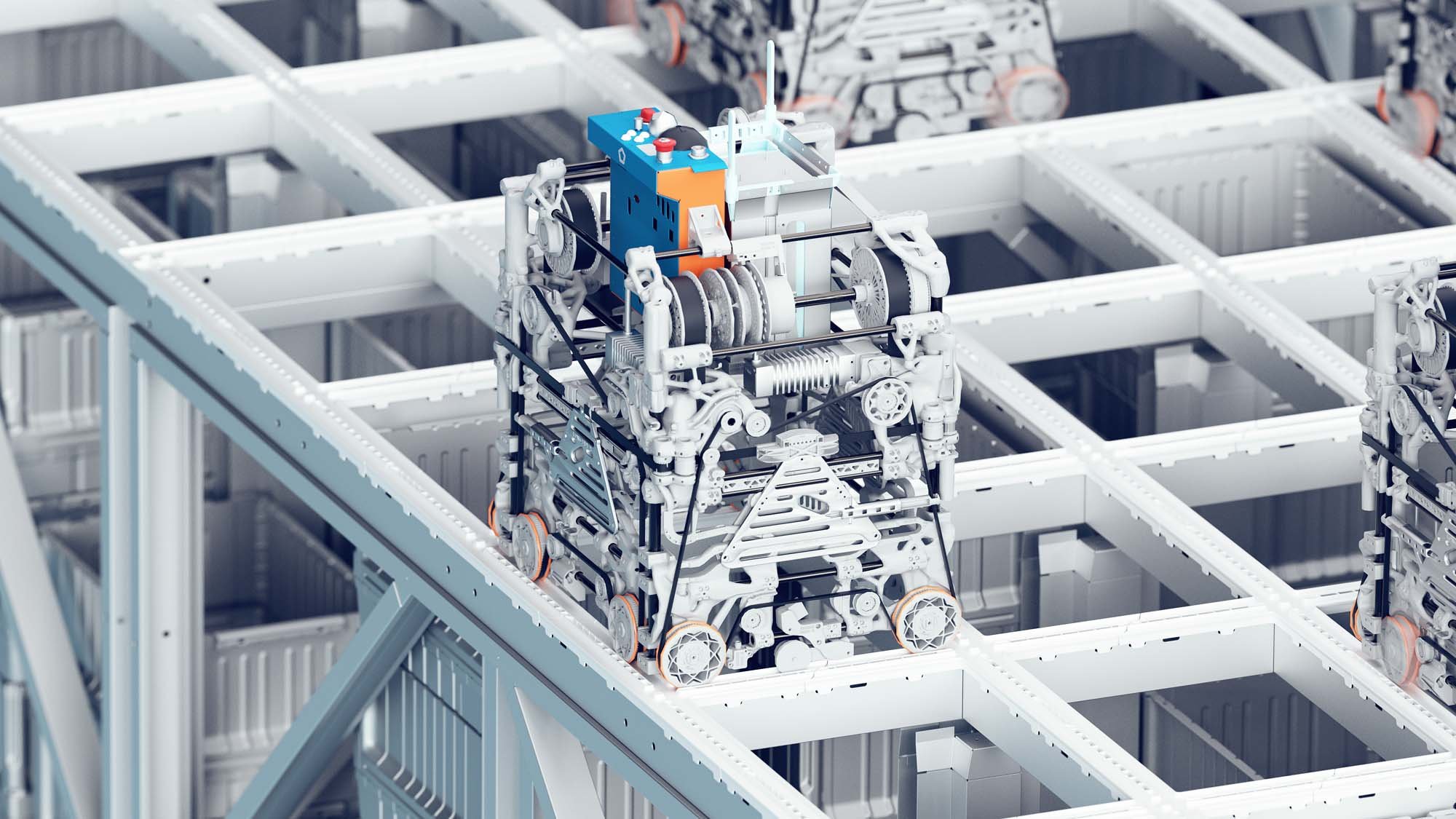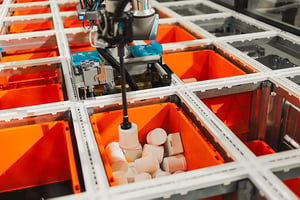Original coverage from Robotics 24/7
The four walls of a warehouse can represent an empty canvas or a constraint. Supply chains require precision, efficiency and maximizing every available inch (or centimeter) to move items from distributors to consumers as quickly and accurately as possible.
The grid (no, not the Tron grid) of an automated storage and retrieval system (ASRS) is the physical representation of terabytes of data, carefully calculated to optimize picking, packing, fulfillment and everything in-between to get things into and out of the facilities.
At Ocado Intelligent Automation (OIA), its Ocado Storage and Retrieval System (OSRS) utilizes simulation, digital twins, 3D-printed robots and picking arms on top of the grid to resourcefully transport groceries, pharmaceuticals, retail and more out of its grid.
Robots in and on the grid
Throughput is the name of the game for OSRS.

In the earliest design phases of the system, hardware and software functionality was front and center. The OCADEX On-Grid Robotic Pick arms have a prominent space atop the OSRS grid, combating warehouse space concerns by moving up, not out.
“The inclusion of the robot on top of the grid wasn't just a hardware decision; it was a systems thinking decision,” said Andy Ingram-Tedd, VP of advanced technology at Ocado Intelligent Automation. “It was guided by data. We do a lot of simulation. A lot of decisions we make are from the simulation. It's all a drive for operational simplicity.”
OCADEX On-Grid Robotic Pick arms incorporate sensors and computer vision to identify, pick, pack and organize items, inching them closer to delivery. With AI and behavioral cloning, the robotic arms can be trained to handle new and potentially delicate items to prevent damage.
The on-grid robotic pick arms maximize space and enable humans to focus their efforts elsewhere in the storage and retrieval of items.
“Factoring in footprint, throughput, build cost, long-term operational costs, all those things, the most efficient way of doing this was to place it directly on top of the grid,” Ingram-Tedd said. “That kind of layout reduces complexity and increases pick speeds. It just keeps everything compact and scales for a nice, simple solution.”
Path planning and route optimization start with simulation
Regardless of brownfield or greenfield location, every OSRS deployment starts with a simulation.
Terabytes of data consisting of items, eaches, picks, totes (storage and customer) and paths are calculated at trillions of iterations each second. The name of the game is efficiency.
“There is visualization. There is simulation. And then there's a digital twin,” Ingram-Tedd said. “A visualization is an animation. A simulation is where we take all the variables, all the inputs, all the parameters, and we use it where something like an Excel spreadsheet is just not going to cut it. We use that to predict outcomes… We use that for the path planning algorithm.”
The next step in the operation is turning the digital component of OIA’s software into a physical environment.

“This is set up before we build the real thing,” he said. “Now that you've built the real thing, it's a replica of the digital model. The software that powers the simulation is the same software that powers the real production site. It doesn't know the difference.”
Once the physical warehouse is built to match the digital model, OIA has a true digital twin. This means they can use live operational data to predict future performance, test changes virtually before applying them and continually optimize how the real warehouse runs.
“When you've built the warehouse that replicates the software and they're the same, then you have a digital twin,” Ingram-Tedd said. “This means you can use your digital twin to make decisions on the fly as you go. It can look ahead and take a look at options. But you can also run your real operation and figure out things like failure modes and timings, and feed them back into the simulation logic…We build everything into this model. The throughput, the layout, the sizing, the bot ramp, the profile, every single bit of detail you can imagine goes in here. It's a hugely complex model in terms of what it's doing. That's kind of our secret sauce.
3D-printed robots add speed, reduce weight and energy
OIA decided in 2022 to improve its grid robots. The resulting robots were built utilizing additive manufacturing and 3D printing.
“The goal wasn't to do 3D printing,” Ingram-Tedd said. “The goal was to make it lighter, more energy efficient, and we wanted to make it faster to develop. 3D printing was central to achieving that. We've used additive manufacturing to reduce the weight of nearly every part.”
With these practices, OIA said it can 3D print about half of the robot’s components. The grid bots are 5x lighter and use about 40% less energy than the previous generation. OIA said the lighter robots and lighter grid construction offer more flexibility and efficiency in the warehouse.
Additionally, OIA has more control over the manufacturing and maintenance of its bots.
“This is also a supply chain advantage,” Ingram-Tedd said. “We can send the raw material we use to the printers in any country and produce it locally. What's more important, though, is how this supports the Agile hardware development. For years, we've been working in an Agile way for software. You write your code, you test a bit, it fails, you redo it, you go again. But now we're doing the same with hardware. 3D printing lets us test new designs in days, not months, and then that means we can experiment. iterate and improve at the speed where, normally, it just wouldn't be possible.”
Ingram-Tedd and the OIA engineering team are not only designers of the technology, they’re users as well. Ocado’s origins in the grocery space have evolved into the fulfillment space with OSRS, but its roots keep innovation moving forward.
“We design automation to solve our own problems,” he said. “We have our own warehouse workers. When we pay someone to stand at that station, or when we pay an engineer to go and maintain and service the site, we want them to be as efficient as possible. Every single time we find a problem or a way to improve it, we've got 2,000 hungry engineers to solve those problems, and we immediately get the benefit of that.”
Want To Learn More?
Our expert team is ready to discuss your unique requirements and provide a customized solution that revolutionizes your fulfillment operations.
@4x.png?width=642&height=166&name=OIA_Logomark_color_(R)@4x.png)





